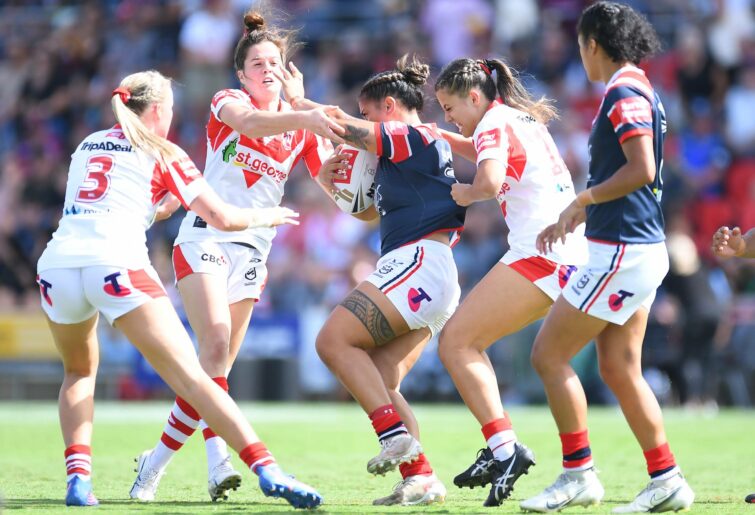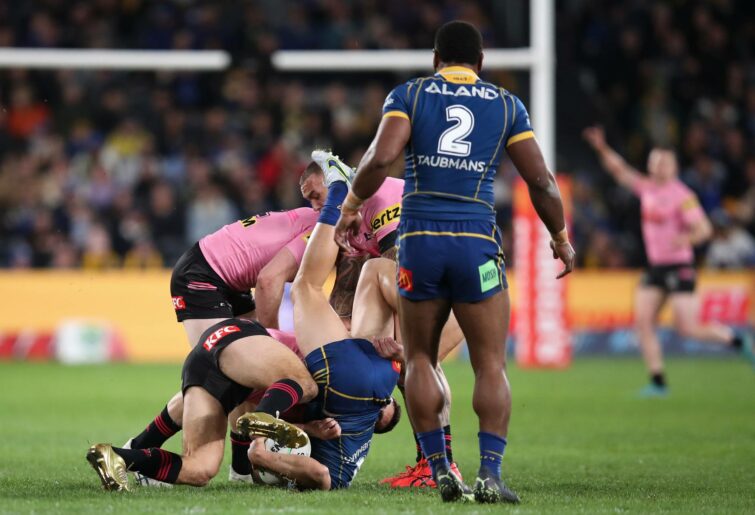Season five of the Women’s National Rugby League Premiership is just 10 days away.
I’m hoping that in the next 10 days the media coverage really ramps up ahead of the opening match between the Parramatta Eels and Sydney Roosters on Saturday 20 August; especially considering the quality of play that season four delivered for us.
Just like in the fourth edition, season five of the NRLW will feature six teams: the Parramatta Eels, Sydney Roosters, St George Illawarra Dragons, Brisbane Broncos, Newcastle Knights and Gold Coast Titans.
This will be the last season with just these six teams, with the competition set to expand in 2023 to also include the Wests Tigers, Cronulla Sharks, Canberra Raiders and North Queensland Cowboys.
Whilst this expansion is exciting, it’s extremely important that any expansion takes place in a sustainable way.
For that to happen, there are a number of issues worth considering and I’m hopeful that the NRL looks to address those issues throughout this upcoming NRLW season and in the move towards season 2023.
The Collective Bargaining Agreement is also up for renegotiation with the Rugby League Players Association to play a crucial role in how these issues are handled.
The players have already started speaking up about some of these challenges.
Many of you will recall that earlier this year, the Australian Rugby League Commission approved enhancements to the Judiciary and Match Review Committee.

(Photo by Albert Perez/Getty Images)
For the men’s game this resulted in a number of changes, but in particular, each male player started 2022 with a clean slate with their player records to begin again on a rolling 12-month period following their last offence.
The existing points system was removed and instead, replaced with a model which was intended to be simpler; resulting in players either being issued with a fine or a suspension.
But what do the changes look like in relation to the women’s game?
In some circumstances, the changes have resulted in bigger fines and longer suspensions for women who are competing in an already short season. Some penalties are also longer than they were in the previous season with some offences facing a three-game suspension when the maximum in season four was two games.
There are also some offences where the suspension is the same length of time in the men’s and women’s game; most notably careless high tackles (grade two and three) and contrary conduct (grades two and three).
On the face of it, this might sound right – equality. But it is certainly not equitable given the disparity in circumstances between the men and the women.
A three match-suspension in the women’s game equates to almost half a season on the sideline, whilst in the men’s game it is a much smaller proportion of an extended season.

(Photo by Joshua Davis/Getty Images)
For women who, in some circumstances, change country to participate in the NRLW, having half your season wiped out for an offence would be particularly distressing. The equivalent would be a male player being wiped out for 16 weeks of a season.
The slogan for the NRLW for the last five seasons has been ‘same game, our way’.
This does not seem particularly fitting for a judiciary process that seems to unnecessarily disadvantage female athletes, many of whom will put their lives on hold in order to play in the NRLW. It almost feels like it is ‘same game, same way’.
As mentioned above, this is not the only challenge which I think is worth addressing ahead of expansion.
The conversation about pay has been done to death and I don’t intend to rehash it here, other than once again saying that it is imperative that if seasons continue to be elongated that payment also be increased, too.
It is not an appropriate outcome for women to exist in a state of financial insecurity just to play the game that they love at an elite level (especially when, given its visibility, an elite standard of play is expected from these women).
Facilities continue to be a concern with some of the facilities our female athletes used last year not being appropriately set up for women’s rugby league.
I remember being told a story about two teams needing to share dressing rooms so that they could have enough toilets for the players prior to the games commencing.
One final point which I am interested in watching play out.
The competition below the NRLW is the Harvey Norman Women’s Premiership. Not all teams in the NRLW have a team in the HNWP (for example, Parramatta).
The HNWP features teams from across Sydney, including the North Sydney Bears, Wentworthville Magpies and Mounties.
With the Tigers, Sharks and Knights all having teams in the NRLW, I wonder whether players will be more likely to move to those clubs to play in a single pathway which could also see them play NRLW at the same level?
It is not necessarily problematic for players to want to play for one club in both competitions, but it could result in teams like the Bears being pillaged for players.
It may make it difficult for some of these teams, who will never have an NRLW team, to make the case to attract talent and additionally, if the best players flood to the same team then this will create unevenness in the competition; this disparity is unwanted in any type of competition.
I’ll be the first in line to get to the NRLW this year, but as the NRLW continues to grow and expand, there are challenging conversations which need to take place.
So, let’s start having them.






























































































